
Though you won’t see him appear in the cinematic universe anytime soon, many may not be aware that Dracula is a Marvel character. Being the star of his own comic book series developed by the comic behemoth, Tomb Of Dracula in the early 1970s, the comic is where the character of Blade made his debut appearance. Dracula has also appeared outside his own series as an antagonist for many of their superhero characters such as Deadpool, the X-Men, and Dr Strange just to name a few. Significantly permeating Western media, the character had yet to make its way over to Japanese media and anime until Dracula: Sovereign of the Damned.
Dracula: Sovereign of the Damned (originally titled Yami no teiô kyuketsuki dorakyura) is a 1980 TV movie directed by Akinori Nagaoka and Minoru Okazaki, both well-known for directing classics in the anime community such as Dragon Ball (1986) and Record of the Lodoss War (1990-91). The anime was part of a deal made in the late 1970s between Marvel Comics and Toei Animation to produce animated versions of their comic book characters. While the deal was successful, this and The Monster of Frankenstein were the only two films made.
“Count Dracula, lord of vampires and the sovereign of the damned, steals away a bride intended for Lucifer. Not only does this anger his dark creator but also a satanic cult and his fellow vampires. He finds that the sins of his past will not allow him to live a normal, mortal life. Events become complicated when he comes under attack from all sides, including his vampire-hunting great-grandson and the children of others he murdered long ago.”
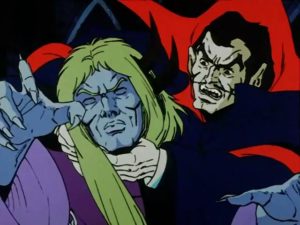
Advertised as a child-friendly film, the tone can conversely be rather melancholic at points. Graphic scenes of bloody violence saturate the otherwise campy design of the story, including scenes such as Dracula feeding on random victims, a gruesome yet sympathetic history of the Voivode of Wallachia (Vlad III), the accidental murder of a baby, and, surprisingly, a day trip to Hell. However, these scenes are inserted organically into the otherwise lighter atmosphere, deepening their overall effectiveness to shock from such a stark contrast. Interestingly, the anime’s lighter, comedic tone acts as a palette cleanser to these scenes, offering (likely unintentional) laugh-out-loud moments as respite.
Presented in a very typical art style for the time, being characterized by beautiful hand-drawn cell animation and detailed character design that flaunt the anime’s vibrant colour pallet, the characters possess an authentic representation over the usual moe style that permeates modern anime – realistic body proportions and height. For instance, the design of Dracula in particular seems based on the likeness of Vincent Price, one of the more infamous actors to take on the role over the years. Consequently, along with his signature cape, this assists the character to be instantly distinct from others sharing a scene and reinforces a robust presence.
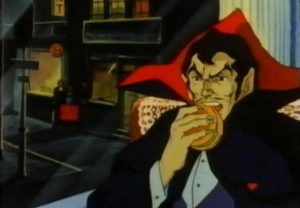
Contrary to his usual depiction, Dracula: Sovereign of the Damned takes a compassionate look at the lord of the vampires and his struggle with the wretched curse of which he suffers, being portrayed as the victim rather than the antagonistic role usually associated. His newly found dedication to his wife and child (not even questioning how the undead can reproduce), as well as other humanising traits, are a different approach to the usual vampiric formula used in media for the servant of Satan.
Now, I’m not normally one to deride the quality of a dub, especially considering it’s typically an afterthought of the production itself. However, as the English dub is the easiest version to find online, I will mention it as the likely standard experience. It is substandard; long before anime would be a mass-consumed export to other countries, dubbing into different languages usually received a woeful effort. Unfortunately, this was common during that era and only a handful of production companies took on the task rather lazily. As such, the film’s dialogue can be underwhelming in its delivery at times, lacking any context in terms of emotions. However, this fault does enhance the campy vibe of the production, providing some amusement to those more open to such wayward quality.
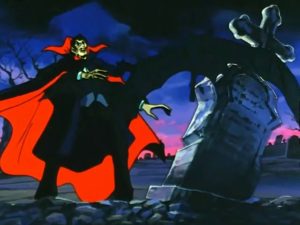
Final Thoughts
Although it has noticeable imperfections, Dracula: Sovereign of the Damned is still an enjoyable experience throughout. With beautiful hand-crafted animation, distinct character design, and a well-blended mix of dark and comedic moments, it more than makes up for any plot holes or poor line delivery. Still, the anime is worthy of a viewing this Halloween, the story will intrigue Dracula fans in addition to fans of the 80s-90s animation style. Despite there being numerous, more competent retellings of the Tomb of Dracula story, this unique anime is still enjoyable to view.
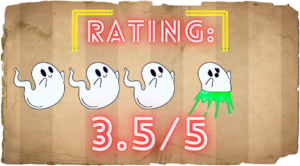
More Anime Reviews
Kite (1998) Anime Review – Film Noir Action
A Kite (or simply Kite to Western audiences) is a 1998 OVA anime, written and directed by Yasuomi Umetsu. Originally released as two separate episodes on VHS, all subsequent DVD…
Advancer Tina (1997) NSFW Anime Review – A Beautiful Duality of Life and Death
A notorious adult animation, Advancer Tina is a 1997 sci-fi horror OVA written by Wataru Amano and directed by Kan Fukumoto (director of the infamous La Blue Girl anime). The…
11 Best Body Horror Anime Of The 80s & 90s – A Vessel For Visceral Visuals
When it comes to horror subgenres, body horror is, by far, the most impressive visually – the loss of bodily autonomy in the most horrendous and intimate way. As such,…
ArtisWitch Anime 2021 Review: Do You Want to Peer Deeper?
ArtisWitch is an anime collaboration project between Sunrise and a Japanese talent agency, AsobiSystem, which features Harajuku art, music, and fashion. In every episode, there is a different artist featured…
Yellow Star (1995) NSFW Anime Review – A Grimy Drug-Fueled Descent into Abuse
First released in 1984, Cream Lemon was an anthology series of standalone adult shorts which revolutionised the OVA (original video animation) market. Despite not being the first adult anime made,…
[April Fools] Shrek (2001) Anime Review: Abandon Hope All Ye Who Watch the Ogre
Every generation has a movie or TV show that collectively traumatized it. Whether it was Tommy Lee Wallace’s It adaptation, The Texas Chainsaw Massacre, or Cory in The House, we…

Hey there, I’m Jim and I’m located in London, UK. I am a Writer and Managing Director here at Grimoire of Horror. A lifelong love of horror and writing has led me down this rabbit hole, allowing me to meet many amazing people and experience some truly original artwork. I specialise in world cinema, manga/graphic novels, and video games but will sometime traverse into the unknown in search of adventure.

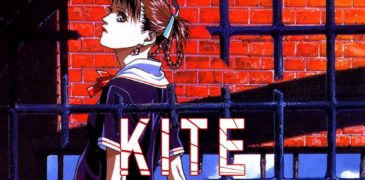
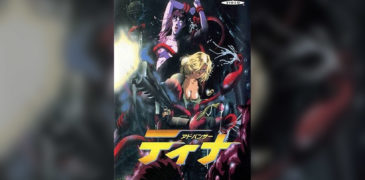

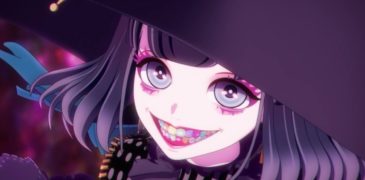
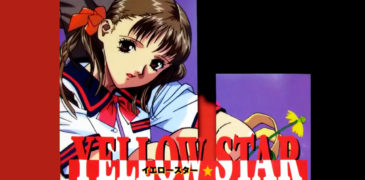
![[April Fools] Shrek (2001) Anime Review: Abandon Hope All Ye Who Watch the Ogre](https://www.grimoireofhorror.com/wp-content/uploads/2022/03/BeFunky-collage-365x180.jpg)